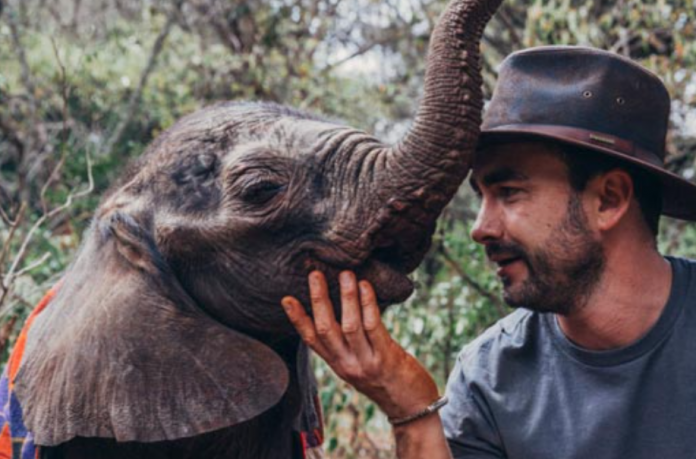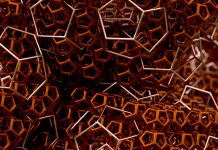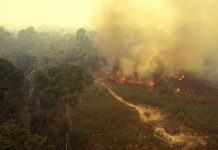Rob Brandford, Executive Director of the Sheldrick Wildlife Trust, discusses the challenge of human-elephant conflict and maps out the complex path to coexistence
Why did the elephant cross the road? It is a well-known joke, but surely the answer is to access food and water. Each day, an elephant can consume up to 150kg of food and some 200 litres of water. To meet their needs, Africa’s savanna elephants have evolved a fine-tuned survival strategy. For starters, they migrate: Their renowned memory means that individuals can recall seasonal feeding grounds hundreds of miles away, as well as how to reach them. They are equipped with tusks that can dig into dry riverbeds to expose underground water and strip bark from trees. Multitool trunks also fulfil a multitude of functions besides breathing, from conveying food and water to their mouths to communication and scent detection – even determining at a distance where rain has fallen.
In turn, as a keystone species, an elephant’s behaviour supports a host of other plants and animals. By digging for water, they create water sources for other species. Their movements create pathways while they also disperse seeds, and it’s even been found that forest elephants’ dining habits are climate-friendly.
Accordingly, there is much to revere about elephants and, historically, Kenyan communities have lived in harmony with wildlife, with pastoral practices complimenting such existence. Over the past 50 years, however, the world that human and elephants share has changed radically as the human footprint has expanded at an alarming rate. Parcels of land are sold and developed, with little land-use planning considered, and this infrastructure and agriculture lead to a loss of wildlife dispersal areas and corridors that once linked conservation areas. Critically important buffer areas that form a natural line in the sand between humans and wildlife are also being built or farmed on. Increased and unregulated livestock grazing in National Parks is also having an impact, leading to competition over browse and already limited water.
How then, does the elephant cross the road? And not only the road, but railway lines, farmers’ fields and human-dominated landscapes, in their efforts to follow ancient migration routes to reach food and water.
These man-made obstacles might impede movement but, remarkably, many elephants still manage to navigate their way through the labyrinth of bush that snakes its way between farms and villages. On their way to work, school, or to fetch water, children and adults can easily turn a corner and chance upon a herd. In the panic, tragically, lives can be lost. Schools can be shut and smallholders may see their crops – and their livelihoods – trampled or eaten. And retaliation can occur, with farmers arming themselves and indiscriminately targeting the next herd that wanders through.
Clearly then, elephants and man can become nightmare neighbours. Yet, with Kenya’s human population projected to increase 50% by 2030, the human-wildlife conflict will not disappear without intervention.
Forging a coexistence
For over 40 years, the Sheldrick Wildlife Trust has been at the forefront of elephant conservation in Kenya.
Born from one family’s passion for wildlife, the Trust operates a pioneering and world-renowned orphan elephant rescue and reintegration project. In recent decades, the charity has expanded its mandate considerably to protect wild elephants and to secure a viable future for them, as well as for the orphans the Trust is raising. Several of these initiatives focus on preventing habitat loss – the root cause of human-elephant conflict.
This can take several forms. Through agreements and concessions with local partners, the Sheldrick Trust manages and protects critical areas of biodiversity from extractive and illegal activities, ensuring elephant habitats do not shrink further. With the first concession granted in 2009, to date, some 330,000 acres are directly protected by the Trust. Across the country, the Trust also funds and supports initiatives by local partners, notably in Mwaluganje Elephant Sanctuary (Kenya’s first community wildlife sanctuary), Mount Kenya, the Mau Forest and Kimana Sanctuary and Corridor; all strongholds for elephants.
In areas of heavy settlement, specially designed fencelines also serve to reduce conflict. It is a sad reality that elephants must now be prevented from roaming wherever they please, but all possible tools are needed to create some level of coexistence between people and elephants. Working with the Kenya Wildlife Service (KWS), Kenya Forest Service and generous donors, so far over 267km of fencelines have been erected and are maintained by the Trust.
Changing hearts and mind is another long-term and critical piece in the puzzle to stop the human-wildlife conflict. Since its inception, the Trust has provided educational support and outreach to communities on the borders of Tsavo National Parks, many of which are severely under-resourced, providing school equipment, free field trips and student sponsorships.
Slowly but surely, this is having an impact. Many communities now know to report elephants when they enter settlements – during 2020, the Trust’s field team attended 134 such incidents (nearly one call out every three days). With a fleet of aircraft which includes two helicopters, pilots shepherd marauding elephants across fencelines and back into the protected Parks. This helps to alleviate conflict and, especially near smallholder farms, improves food security.
These ‘elephant drives’ might be a short-term solution, but it’s a solution that ultimately saves lives. Meanwhile, the Trust funds five Mobile Veterinary Units, operating in partnership with KWS, to treat injured wild animals, many speared in cases of human-wildlife conflict. And, where milk-dependent calves are left behind in the chaos of conflict, the Orphans’ Project steps in to raise these vulnerable infants.
In a decade’s time, when these calves have grown and are ready to re-join the wild, there is no doubt that the world will look very different. But with concerted action today to save habitats, it is hoped that they can better coexist with humans, for the benefit of all life.











